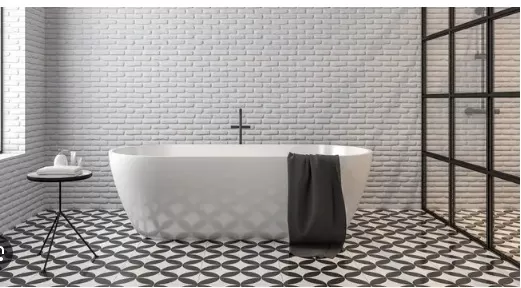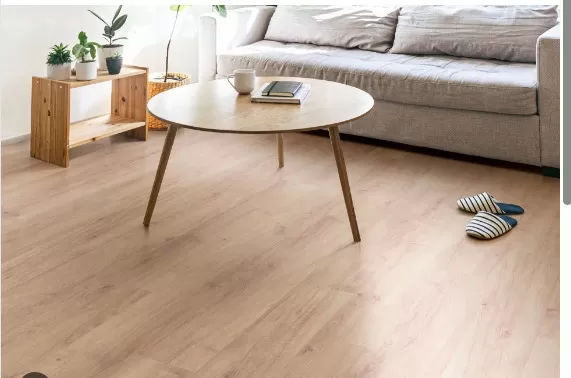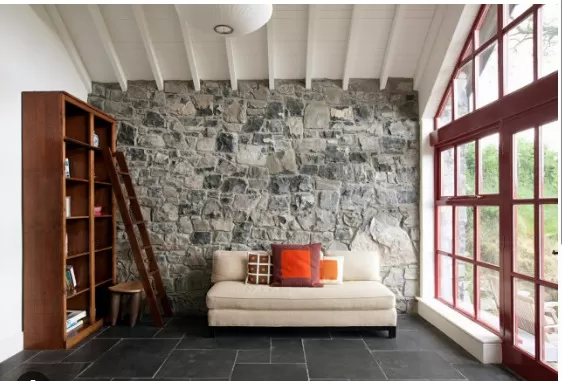Top Bathroom Floor Tile Choices: Exploring the Best Options. Modern bathrooms have evolved beyond their practical origins and now serve as luxurious escapes and oases within our homes. Among the various design elements in a bathroom, the flooring holds significant importance.
When it comes to bathroom flooring options, tile remains the overwhelmingly popular choice. With a wide range of materials available, such as vinyl, laminate, ceramic, porcelain, and more, there is ample room for creativity and personalization. The key is to select a tile that complements, rather than competes with, the overall design and decor of the space. To inspire your bathroom flooring choices, explore our favorite bathroom floor tile ideas and discover the perfect flooring solution for your home.
Exploring Bathroom Floor Tile Options

When it comes to bathroom floor tile, there is a wide array of materials available, each with its own set of advantages and considerations.
Understanding the characteristics of different tile materials will help you make an informed decision that suits your bathroom’s style and requirements. Here’s a guide to various bathroom floor tile options:.
Vinyl: Vinyl tiles are popular for bathroom floors due to their affordability, durability, and water resistance.
They are available in a wide range of colors, patterns, and textures, including options that mimic the look of natural materials like stone or wood. Vinyl tiles are relatively easy to install and maintain.
Pros: Affordable, water-resistant, durable, easy to install and clean.
Cons: Prone to scratches and indentations, may fade over time.
Ceramic: Ceramic tiles are a classic choice for bathroom floors.
They come in various sizes, colors, and designs, allowing you to create different looks and patterns. Ceramic tiles are moisture-resistant, durable, and easy to clean, making them suitable for high-moisture areas like bathrooms.
Pros: Durable, water-resistant, versatile in design, easy to clean.
Cons: Can be cold underfoot, may require regular resealing of grout.
Wood: Wood-look tiles have become popular for bathroom floors as they offer the warm and inviting appearance of wood with added durability and moisture resistance.
These tiles are typically made of porcelain or ceramic, providing a water-resistant alternative to natural wood.
Pros: Aesthetic appeal of wood, water-resistant, durable.
Cons: May feel colder than other options, requires proper installation and sealing.
Stone: Natural stone tiles, such as marble, granite, or slate, add a luxurious and timeless look to bathroom floors.
Stone tiles are durable and can withstand moisture, making them suitable for bathroom use. However, they require regular maintenance and sealing to prevent staining and damage.
Pros: Natural beauty, durability, adds value to the space.
Cons: Requires sealing and maintenance, can be expensive, may be slippery when wet.
Glass: Glass tiles bring a unique and modern aesthetic to bathroom floors.
They are available in various colors, shapes, and finishes, allowing for creative and customized designs. Glass tiles are non-porous and resistant to stains, making them easy to clean.
Pros: Stylish and modern, non-porous, easy to clean.
Cons: May be slippery when wet, may require professional installation.
When choosing bathroom floor tile, consider factors such as your budget, desired style, maintenance requirements, and the level of foot traffic in your bathroom.
It’s also important to ensure that the chosen tile material is suitable for wet environments and provides the necessary safety features, such as slip resistance.
By considering the pros and cons of different tile options, you can select the best bathroom floor tile that combines functionality, durability, and aesthetic appeal to create a stunning and practical bathroom space.
Choosing Vinyl Floor Tiles for Your Bathroom
Vinyl floor tiles have gained popularity as a top choice for bathroom flooring due to their affordability, practicality, and versatility.
Here’s why vinyl is a popular option and what you need to know when considering vinyl floor tiles for your bathroom:.
Cost-effective: Vinyl flooring is known for its budget-friendly price compared to other flooring options.
If you’re looking for a cost-effective solution without compromising quality, vinyl is a great choice.
Practicality: Vinyl is a practical choice for bathrooms due to its water resistance.
It is designed to withstand moisture, making it ideal for wet environments like bathrooms where spills and humidity are common. Vinyl floor tiles provide a barrier against water penetration, protecting the subfloor from potential damage.
Safety and comfort: Vinyl flooring offers slip resistance, providing a safer surface in areas prone to moisture.
It is designed to be slip-resistant even when wet, reducing the risk of accidents. Additionally, vinyl provides a cushioned feel underfoot, offering comfort and support while walking in bare feet.
Easy maintenance: Vinyl flooring is known for its low-maintenance characteristics.
It is easy to clean and requires minimal effort to keep it looking fresh. Regular sweeping or vacuuming, along with occasional damp mopping, is usually sufficient to maintain its appearance.
Additionally, vinyl’s moisture resistance prevents the growth of mold and mildew, making it a hygienic choice for bathrooms.
Variety of looks: Vinyl floor tiles come in a wide range of colors, patterns, and textures, allowing you to achieve the desired aesthetic for your bathroom.
Whether you prefer a natural stone look, wood grain pattern, or vibrant colors, vinyl offers options to suit various design styles.
Easy installation: Vinyl floor tiles are designed for easy installation, and many are self-adhesive, simplifying the process even further.
They can be cut to size using a utility knife, making it convenient to fit them around fixtures and corners. However, it’s important to ensure proper subfloor preparation for a smooth and durable installation.
When selecting vinyl floor tiles for your bathroom, consider factors such as the thickness and wear layer of the tiles to ensure durability and longevity.
Additionally, check for manufacturer warranties and choose high-quality vinyl products for better performance.
By choosing vinyl floor tiles, you can achieve an affordable, practical, and stylish flooring solution for your bathroom.
Its water resistance, ease of maintenance, and wide range of options make it a popular choice among homeowners looking for a reliable and attractive flooring option.
Considering Laminate Flooring for Your Bathroom

Laminate flooring, particularly in plank form, can be an appealing choice for bathroom remodeling projects.
It offers durability, easy maintenance, and a wide range of design options. However, it’s important to be aware of its limitations, particularly in terms of moisture resistance.
Here’s what you should know about laminate flooring in the context of bathroom use:.
Durability and easy maintenance: Laminate flooring is known for its durability and resistance to scratches, fading, and stains.
It can withstand regular foot traffic and is easy to keep clean with regular sweeping or vacuuming and occasional damp mopping. Laminate flooring is designed to retain its appearance over time, making it a practical choice for bathrooms.
Wide variety of designs: Laminate flooring comes in a vast array of designs, patterns, and textures, including options that mimic the look of natural materials such as wood or stone.
This allows you to achieve the desired aesthetic for your bathroom while enjoying the benefits of a durable and cost-effective flooring solution.
Moisture resistance concerns: One of the main drawbacks of laminate flooring in bathrooms is its vulnerability to moisture.
While laminate has a protective wear layer, the fiberboard core can be susceptible to water damage. Standing water or excessive moisture can seep into the core, causing it to expand and potentially lead to buckling or warping.
Therefore, it’s crucial to promptly clean up any spills or moisture on the floor and ensure proper ventilation in the bathroom to minimize the risk of damage.
Considerations for installation: When installing laminate flooring in a bathroom, it’s essential to follow the manufacturer’s guidelines and recommendations.
This typically includes leaving a small expansion gap around the edges of the floor to accommodate any potential expansion due to moisture exposure. Properly sealing the edges of the flooring during installation can also help reduce the risk of moisture infiltration.
Alternatives for wet areas: If your bathroom experiences high levels of moisture or if you anticipate frequent water exposure, you may want to consider alternative flooring options specifically designed for wet areas.
These options include vinyl, ceramic or porcelain tiles, or natural stone, which offer greater moisture resistance and are better suited for environments prone to water spills or humidity.
When considering laminate flooring for your bathroom, carefully assess your specific needs, moisture levels, and maintenance habits.
If you prioritize moisture resistance and anticipate frequent water exposure, exploring alternative flooring options may be a more suitable choice.
Ultimately, laminate flooring can be a viable option for bathrooms, particularly when combined with proper maintenance and precautions to minimize moisture-related risks.
However, it’s important to weigh the benefits and limitations and make an informed decision that aligns with your specific circumstances and preferences.
Exploring Cork Flooring for Your Bathroom
Cork Flooring is a unique and eco-friendly option that offers several benefits for bathroom use.
Its warmth, comfort, and ease of installation make it an appealing choice. Here’s what you should know about cork flooring in the context of bathroom flooring:.
Warmth and comfort: Cork is naturally warm to the touch, providing a cozy and comfortable surface for bare feet.
Its softness and flexibility make it a forgiving flooring option, offering a more cushioned feel compared to harder materials like tile or stone.
Easy installation: Cork flooring is relatively straightforward to install.
Traditional cork tiles are typically installed using a troweled-on adhesive, ensuring a secure bond with the subfloor. Alternatively, click-in-place floating floor products are available, simplifying the installation process further.
Floating cork floors require no adhesive and can be installed over existing flooring or subfloors.
Variety of colors: Cork flooring is available in a range of colors, allowing you to find an option that complements your bathroom’s style and aesthetic.
Whether you prefer natural, earthy tones or vibrant hues, you can find tinted cork flooring to suit your design preferences.
Eco-friendly choice: Cork is a sustainable and renewable material, as it is harvested from the bark of cork oak trees without harming the tree itself.
Choosing cork flooring is an environmentally conscious decision, making it an attractive option for those seeking eco-friendly alternatives.
Moisture resistance: While cork flooring has some natural resistance to moisture, it is not entirely waterproof.
Therefore, it’s important to take precautions to prevent excessive water exposure and ensure proper maintenance. Promptly wiping up spills and avoiding standing water on the surface will help maintain the integrity of the flooring.
Maintenance considerations: Cork flooring is relatively low-maintenance.
Regular sweeping or vacuuming, along with occasional damp mopping using a pH-neutral cleaner, is usually sufficient to keep the floor clean and in good condition. Additionally, it’s recommended to periodically apply a protective sealant to enhance the durability and moisture resistance of the cork.
It’s important to note that cork flooring may experience slight fading or discoloration when exposed to direct sunlight over time.
Therefore, consider using window coverings or rugs to protect the flooring from prolonged sunlight exposure.
Cork flooring can be an excellent choice for bathrooms, providing warmth, comfort, and a distinctive aesthetic.
However, it’s essential to consider the potential moisture risks and take appropriate measures to prevent water damage. By following proper installation guidelines, maintaining the floor, and promptly addressing any spills or moisture issues, you can enjoy the benefits of cork flooring in your bathroom.
Exploring Stone Tiles for Your Bathroom

Stone tiles offer a luxurious and timeless option for bathroom flooring.
With a wide range of colors, textures, and variations, they can enhance the visual appeal and create a natural ambiance in your bathroom. Here’s what you should know about stone tiles for bathroom flooring:.
Diverse range of materials: Stone tiles are available in various types, including limestone, marble, granite, and slate.
Each material offers unique characteristics, such as distinct colors, veining, and textures. From the classic elegance of marble to the rustic charm of slate, you can find a stone tile that suits your desired aesthetic.
Broad color palette and textures: Stone tiles come in a diverse array of colors, ranging from subtle creams and blues to vibrant reds, greens, and golds.
The natural variations in each piece of stone add depth and character to the flooring. Additionally, stone tiles offer a wide range of textures, such as cleft, tumbled, sandblasted, etched, and flamed finishes, providing different looks and surface feels.
Durability and longevity: Stone is a highly durable material, making it suitable for high-traffic areas like bathrooms.
It can withstand the test of time and retain its beauty even with regular use. However, some types of stone may require sealing to enhance their resistance to stains and moisture.
Maintenance requirements: Stone tiles generally require more maintenance compared to ceramic tiles.
Regular cleaning and sealing are recommended to protect the surface and maintain its appearance. Stone is porous, which means it can absorb liquids and be susceptible to staining.
Proper sealing helps to minimize this risk and makes cleaning easier.
Natural beauty and uniqueness: One of the standout features of stone tiles is their natural beauty and unique characteristics.
The patterns, veining, and color variations in each stone tile create a one-of-a-kind look for your bathroom. This natural aesthetic can add a touch of elegance and sophistication to the space.
Professional installation: Stone tiles are typically thicker and heavier than ceramic tiles, requiring professional installation for best results.
A skilled installer can ensure proper subfloor preparation, effective sealing, and precision in laying the tiles, maximizing their durability and longevity.
When considering stone tiles for your bathroom, it’s important to assess your lifestyle, maintenance preferences, and budget.
Keep in mind that stone tiles may have a higher upfront cost compared to other materials. However, their durability and timeless appeal can make them a worthwhile investment in the long run.
With their wide range of colors, textures, and natural beauty, stone tiles can transform your bathroom into a luxurious and inviting space.
By following proper maintenance practices and periodic sealing, you can enjoy the enduring beauty of stone in your bathroom for years to come.
*The information is for reference only.